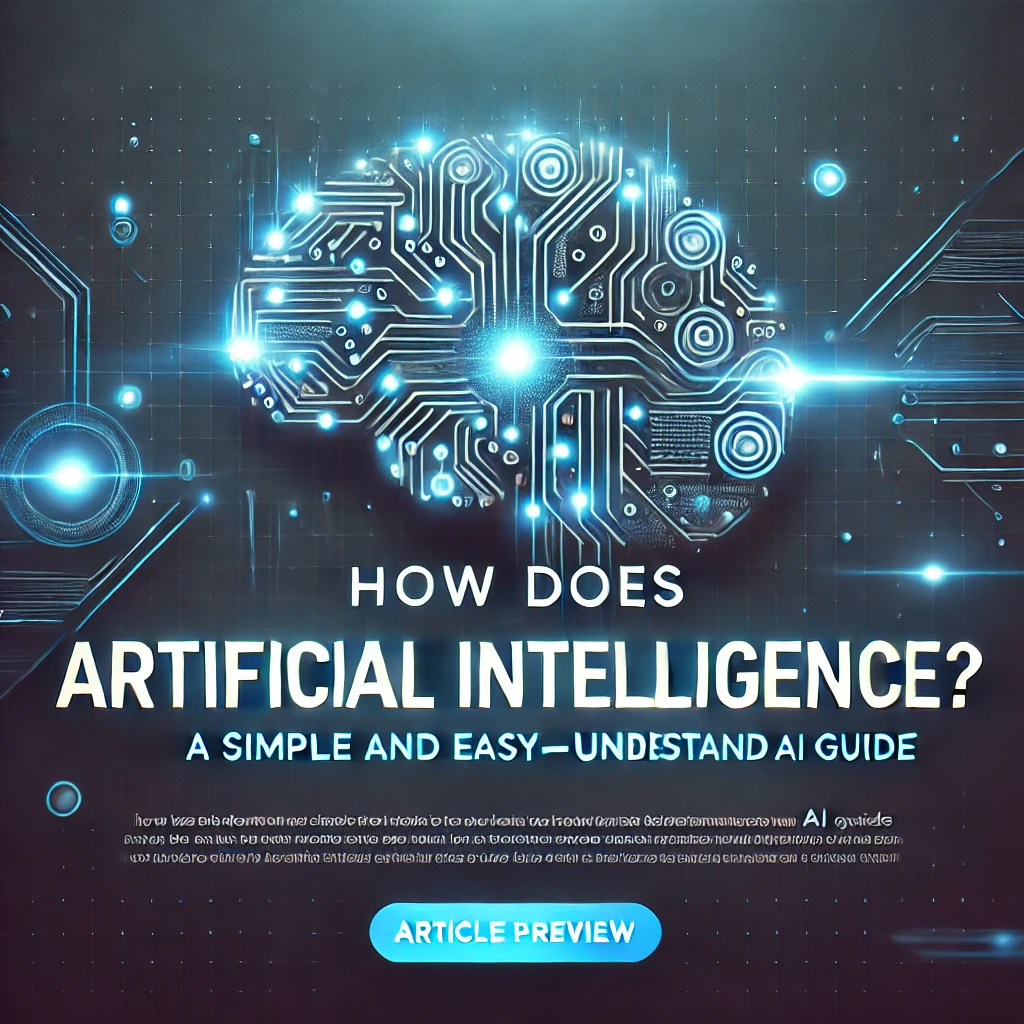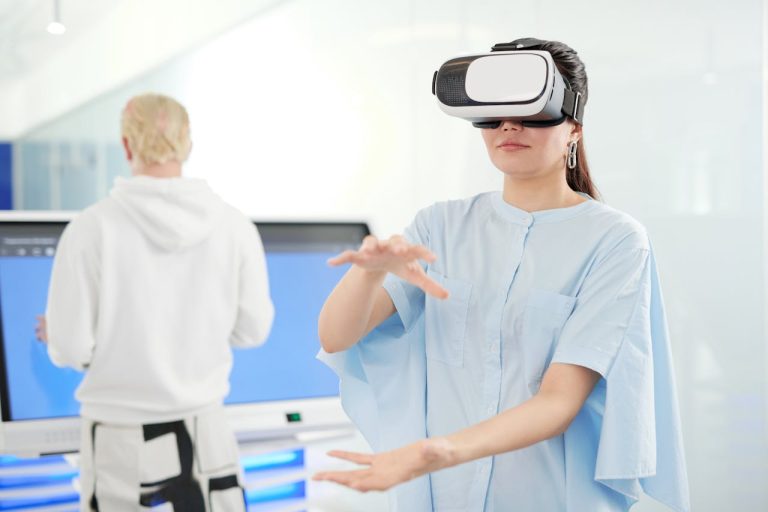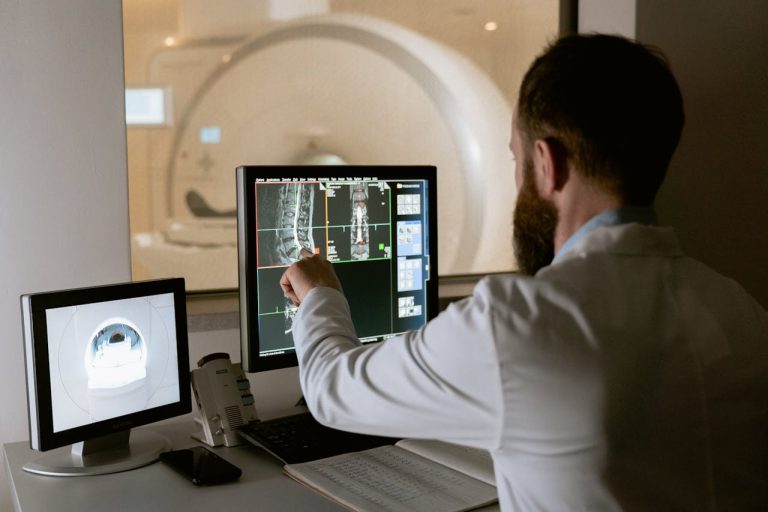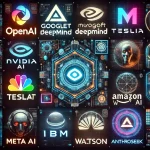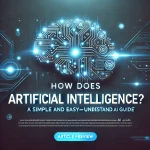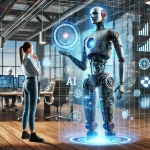Introduction
Artificial Intelligence (AI) has become an integral part of our daily lives, powering everything from smart assistants like Siri and Alexa to self-driving cars, chatbots, and recommendation systems such as Netflix and YouTube. But how does Artificial Intelligence work? How can AI “think,” “learn,” and “make decisions” like humans?
You may not realize it, but AI-powered technologies are everywhere! From machine learning algorithms improving search results to deep learning systems revolutionizing healthcare, AI is reshaping industries.
This guide will explain the core concepts of AI, how AI works, and its applications in real life—including Machine Learning (ML), Deep Learning (DL), and Natural Language Processing (NLP)—all in a simple and easy-to-understand way.
1. What is Artificial Intelligence?

AI refers to computer systems that can perform tasks that typically require human intelligence, such as learning, reasoning, pattern recognition, and decision-making. AI is mainly powered by two key technologies:
✅ Machine Learning (ML) – AI learns from vast amounts of data, identifies patterns, and makes predictions based on them.
➡ Example: Fraud detection systems in banks analyze past transactions to identify suspicious activities.
✅ Deep Learning (DL) – A more advanced branch of ML that uses artificial neural networks to mimic the human brain.
➡ Example: Facial recognition technology uses deep learning to identify people in photos.
2. You Use AI Every Day Without Even Knowing It!

AI has quietly integrated into our daily routines. Here are some common examples:
📩 Spam Email Filters – AI analyzes email content, sender history, and keywords to filter out spam.
📱 Smartphone Photo Enhancements – Your iPhone or Android automatically adjusts brightness, colors, and even smooths skin using AI.
🔍 Google Search Suggestions – AI optimizes search results based on your browsing habits.
🎵 Spotify & TikTok Music Recommendations – AI predicts your preferences and suggests songs you might like.
🛒 Amazon & eCommerce Personalization – AI recommends products based on your past searches and purchases.
🚗 Google Maps & Navigation – AI predicts traffic conditions and provides real-time route adjustments.
💳 Credit Card Fraud Detection – AI spots unusual transactions and alerts banks to prevent fraud.
🗣 Siri / Alexa Voice Assistants – AI understands and responds to spoken commands using natural language processing (NLP).
🎥 Netflix & YouTube Video Recommendations – AI analyzes your viewing history to suggest content.These are just a few ways AI is already shaping our lives!
These are just a few ways AI is already shaping our lives!
3. How Does AI Learn?
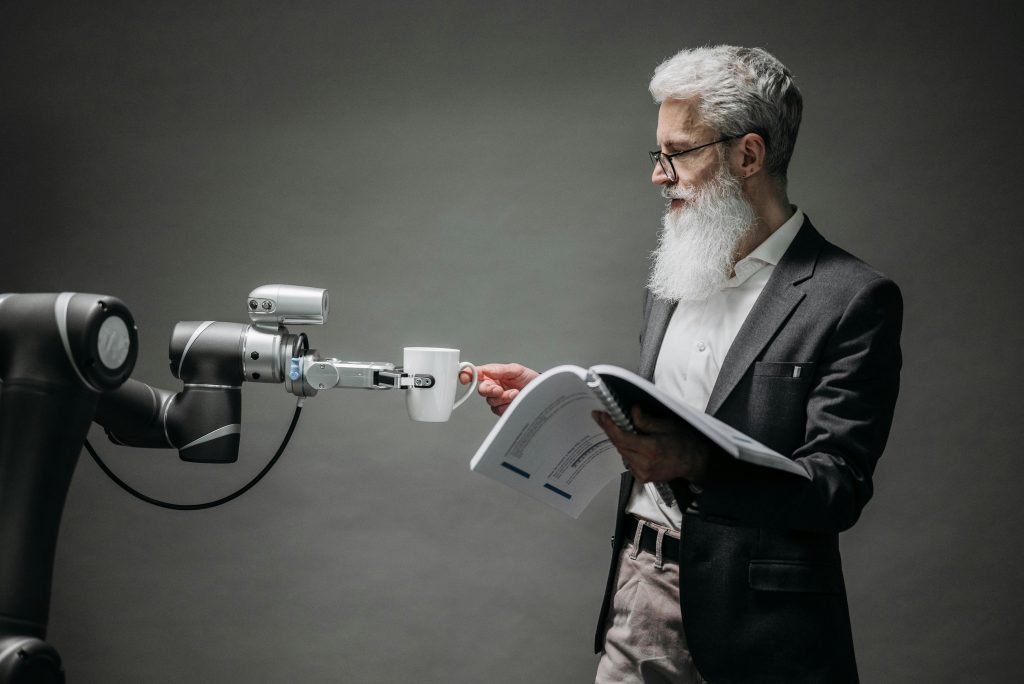
AI learns by processing data and identifying patterns. The three main types of machine learning are:
1️⃣ Supervised Learning
✅ How it works: AI learns from labeled data provided by humans.
✅ Example: AI is trained on thousands of cat images labeled as “cat” to recognize cats in new images.
🔹 Real-world applications:
- Speech recognition (Siri learns how people pronounce words)
- Spam detection (AI learns which emails are spam)
2️⃣ Unsupervised Learning
✅ How it works: AI finds patterns in data without labeled examples.
✅ Example: AI groups similar customers based on shopping behavior.
🔹 Real-world applications:
- Market analysis (AI identifies customer trends)
- News recommendations (AI predicts your interests)
3️⃣ Reinforcement Learning
✅ How it works: AI learns by trial and error and improves through rewards and penalties.
✅ Example: AI learns how to play video games by testing different strategies and getting points for success.
🔹 Real-world applications:
- Self-driving cars (AI learns how to drive safely)
- Robotics (AI learns how to walk, pick up objects, etc.)
4. How Does AI Work in Everyday Life?

Let’s take a closer look at how AI operates in real-world applications:
✅ Smart Voice Assistants (Siri, Alexa, Google Assistant)
- Uses natural language processing (NLP) to understand voice commands.
- Example: “Hey Siri, remind me of my meeting at 8 AM tomorrow” → Siri sets a reminder.
✅ Social Media Feeds (Facebook, Instagram, TikTok)
- AI tracks your likes, shares, and comments to personalize your feed.
- Example: You watch cat videos → AI recommends more cat videos.
✅ Chatbots & Customer Support (Amazon, Banks, Airlines)
- AI chatbots answer common questions and resolve customer issues.
- Example: “How do I track my order?” → AI instantly provides tracking details.
✅ AI-Powered Translation (Google Translate, DeepL)
- Uses neural machine translation (NMT) to provide accurate translations.
- Example: AI translates text while understanding context and meaning.
✅ AI in Finance (Stock Predictions, Robo-Advisors)
- AI analyzes historical stock data and suggests investments.
- Example: Robinhood AI suggests an optimized stock portfolio based on market trends.
5. AI’s Limitations & Future Development

Despite its power, AI has significant limitations:
❌ AI Can’t Truly Understand Human Emotions
- AI can simulate emotions, but it doesn’t actually feel them.
- Example: AI can write a “heartfelt” email, but it doesn’t experience emotions like sadness or joy.
❌ AI Depends Heavily on Data Quality
- AI learns from data, and biased data leads to biased AI.
- Example: Some hiring AI systems have shown gender bias because past hiring data favored men.
❌ AI Lacks True Creativity
- AI can generate text, music, or art, but it doesn’t have original inspiration like humans.
- Example: AI can mimic Van Gogh’s painting style, but it can’t invent a new art movement.
🔮 Future of AI
- Better Natural Language Understanding (NLP) – AI will chat like a real person without predefined commands.
- Artificial General Intelligence (AGI) – AI may develop human-like intelligence beyond specific tasks.
- Safer & Transparent AI – Future AI systems will be more controlled and explainable, avoiding “black box” decision-making.
6. AI Engineers: The People Behind AI

AI doesn’t develop itself—AI engineers build, train, and optimize it!
1️⃣ AI Model Development (Algorithm Design)
🔹 Engineers select machine learning models, such as decision trees, neural networks, and deep learning models.
🔹 Example: How does ChatGPT learn to answer questions?
- Engineers train AI on massive amounts of text data (books, articles, conversations).
- AI predicts the most likely next word in a sentence.
- AI is fine-tuned with reinforcement learning for more natural responses.
2️⃣ Data Processing & Training AI
🔹 AI needs clean, well-labeled data to learn effectively.
🔹 Engineers:
- Collect and clean data (removing duplicates, errors, irrelevant data).
- Label data (mark images as “cat” or “dog” for AI to learn).
🔹 Example: Self-driving cars recognizing traffic lights
- Engineers train AI with thousands of images labeled “red light,” “green light.”
3️⃣ Optimizing AI for Accuracy & Speed
🔹 Engineers tweak AI settings to reduce errors and improve efficiency.
🔹 Example: Making AI understand different accents
- AI initially struggles with Indian or Scottish accents.
- Engineers add more diverse voice samples to improve recognition.
4️⃣ AI Safety & Ethical Considerations
🔹 Engineers ensure AI is safe, fair, and transparent.
🔹 Example: Why can’t AI generate fake news?
- AI used to generate misleading content.
- Now, engineers implement content moderation rules to prevent misinformation.
🔹 Conclusion: What is the role of an AI engineer?
It can be simply summarized as:
✅ Designer: Creates the way AI learns
✅ Trainer: Provides data for AI to learn
✅ Optimizer: Adjusts AI to make it more accurate and efficient
Conclusion: The Future of AI
AI is evolving at an unprecedented speed, transforming industries like smart homes, healthcare, finance, autonomous vehicles, and entertainment. From machine learning algorithms to deep learning neural networks, AI is revolutionizing the way we interact with technology.
However, artificial intelligence comes with both opportunities and challenges, including AI ethics, data privacy, and the future of automation.
Want to stay updated on AI trends, innovations, and breakthroughs? Follow AiWealthX.com for the latest insights into AI technology, natural language processing (NLP), AI-powered automation, and industry advancements!
